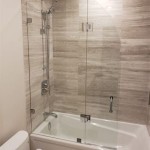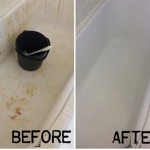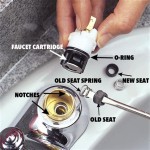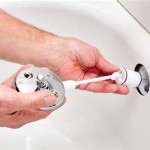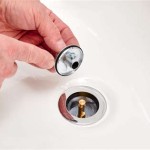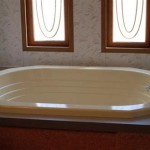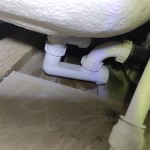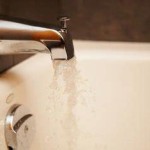Can You Install A Bathtub Surround Over Tile Walls?
The question of whether one can install a bathtub surround directly over existing tile walls is a common one for homeowners considering bathroom renovations. While seemingly a shortcut that saves time and effort, the feasibility and long-term success of this approach hinge on several factors. Understanding these factors is crucial to making an informed decision and avoiding potential issues down the line, which may include structural damage, mold growth, and premature failure of the new surround.
A bathtub surround is a multi-piece system designed to create a waterproof barrier around the bathtub, replacing or covering the existing wall finish. These surrounds are typically made of acrylic, fiberglass, or composite materials, offering a seamless and easily cleanable surface. Installing a surround can significantly improve the aesthetic appeal of a bathroom and provide enhanced protection against water damage. However, improper installation can negate these benefits and lead to costly repairs.
Many homeowners are drawn to the idea of installing a surround over existing tile to avoid the messy and time-consuming process of tile removal. Tearing out old tile can be a labor-intensive task, generating dust and debris. Furthermore, removing tile can potentially damage the underlying wallboard, requiring further repairs. The appeal of simply adhering a new surround over the old tile is therefore understandable. However, a careful assessment of the existing tile and wall conditions is essential before proceeding with this approach.
Key Considerations Before Installing a Surround Over Tile
Several critical factors must be evaluated before deciding to install a bathtub surround directly over existing tile. Overlooking these considerations can result in a subpar installation and potentially serious problems down the road.
1. The Condition of the Existing Tile: The most important factor is the condition of the existing tile. The tile surface must be structurally sound, with no loose, cracked, or missing tiles. Any loose tiles must be re-secured or replaced before proceeding. Cracks in the tile can allow water to penetrate behind the surround, leading to mold growth and damage to the underlying wallboard. Grout lines must also be in reasonably good condition. Significant grout deterioration can create an uneven surface, making it difficult to achieve a proper bond between the surround and the tile. Grout should be cleaned and repaired if necessary to provide a stable and even surface.
2. Wallboard Integrity: The structural integrity of the wallboard behind the tile is paramount. If the wallboard is damaged or compromised by water, it will not provide a stable base for the surround. Signs of water damage include staining, swelling, and crumbling. If there is any indication of water damage, the tile must be removed to inspect the wallboard thoroughly. Damaged wallboard must be replaced before installing the surround.
3. Surface Preparation and Adhesion: Proper surface preparation is crucial for ensuring a strong and lasting bond between the surround and the tile. The tile surface should be thoroughly cleaned to remove soap scum, mildew, and any other contaminants that could interfere with adhesion. A degreasing cleaner is recommended. After cleaning, the tile surface should be lightly sanded to create a slightly rough texture, which will improve adhesion. The adhesive used to install the surround must be specifically designed for bonding to tile. Follow the manufacturer's instructions carefully to ensure proper application and curing. Applying an insufficient amount of adhesive or using the wrong type of adhesive can result in the surround detaching from the wall over time.
Beyond these core requirements, other factors also contribute to the success of the installation. These include the thickness of the existing tile and grout lines, the type of adhesive used, and the method of installation. The chosen surround must be compatible with the irregularities of the existing tile surface to ensure a flush and secure fit. It's often advised to choose a surround with a deeper lip or wider flange that can accommodate the added thickness of the tile.
Potential Problems with Installing Over Tile
While installing a bathtub surround over existing tile might seem like a simple solution, it's important to acknowledge the potential challenges and drawbacks associated with this method.
One major concern is the issue of moisture entrapment. If any water manages to seep behind the surround, whether through cracks in the tile or around the edges of the surround, it can become trapped between the surround and the tile. This trapped moisture can create a breeding ground for mold and mildew, which can lead to health problems and structural damage to the wallboard. Furthermore, the trapped moisture can corrode the tile adhesive, causing the tile to loosen and potentially leading to the surround detaching from the wall.
Another potential problem is the added weight. The weight of the new surround, combined with the existing tile, can put extra stress on the wall structure. If the wall is not strong enough to support this additional weight, it can lead to sagging or even collapse over time. This is especially a concern in older homes where the wall structure may not be as robust. Before installing a surround over tile, it's important to assess the wall's structural integrity and ensure that it can handle the added weight. Consultation with a structural engineer or experienced contractor may be necessary in some cases.
Aesthetic considerations are also important. Even with careful installation, it can be difficult to completely conceal the grout lines and imperfections of the existing tile. These imperfections can detract from the overall appearance of the new surround, making it look less professional and less seamless. The existing tile can also affect the way the surround fits against the wall, potentially leaving gaps or uneven surfaces. While these gaps can be filled with caulk, they may still be visible and can create a less aesthetically pleasing result.
Alternative Solutions and When to Avoid Installing Over Tile
Given the potential risks and drawbacks, it's often advisable to consider alternative solutions or avoid installing a surround over tile altogether. One alternative is to remove the existing tile completely and install the surround directly onto the wallboard. This approach offers several advantages. It allows for a thorough inspection of the wallboard, ensuring that it is in good condition and free from water damage. It also eliminates the risk of moisture entrapment between the surround and the tile. Furthermore, it provides a smoother and more even surface for the surround, resulting in a more professional and aesthetically pleasing finish. Removing the tile is undoubtedly more labor-intensive and time-consuming, but it often provides a more reliable and long-lasting result.
Another alternative is to install a waterproof membrane over the existing tile before installing the surround. This membrane creates a barrier that prevents water from penetrating behind the surround, mitigating the risk of mold growth and water damage. However, this approach still requires careful surface preparation and adhesion to ensure that the membrane is properly bonded to the tile. It's also important to choose a membrane that is compatible with the adhesive used to install the surround.
There are certain situations where installing a bathtub surround over existing tile is definitely not recommended. If the tile is loose, cracked, or damaged, it must be removed before installing the surround. Similarly, if there is any evidence of water damage to the wallboard, the tile must be removed to assess the extent of the damage and make necessary repairs. It's also important to avoid installing over tile if the existing grout lines are significantly deteriorated or if the tile surface is uneven. In these cases, removing the tile and installing the surround directly onto the wallboard is the most reliable and long-lasting solution.
Before embarking on any bathroom renovation project, it's always a good idea to consult with a professional contractor or remodeler. An experienced professional can assess the existing conditions of the bathroom, provide expert advice on the best approach for installing the bathtub surround, and ensure that the installation is done correctly and safely. They can also identify any potential problems or challenges that may arise during the project and recommend solutions to address them.
Ultimately, the decision of whether to install a bathtub surround over existing tile is a complex one that depends on a variety of factors. While it can be a viable option in some cases, it's important to carefully evaluate the existing conditions, consider the potential risks and drawbacks, and weigh the alternative solutions before making a decision. By taking a cautious and informed approach, homeowners can ensure a successful and long-lasting bathroom renovation.

Installingtub Surround How To Install A Tub

Tub Surround Tile Renovation Art

Diy Tips For Tiling A Tub Surround Twofeetfirst

Dreamline Qwall Tub 56 60 In W X 36 D 62 H Acrylic Backwall Kit

Palisade Waterproof Tiles Shower Installation

How To Install Tub Surround Flippers Warehouse

Have A Question About American Standard Colony 32 In X 60 5 Piece Glue Up Alcove Wall Bath Set Beige Parchment Pg 1 The Home Depot

A Subway Tile Tub Surround Art Renovation

Tile Tub Surround Cost Pro

Marble Tile Tub Surround Art Renovation
Related Posts

